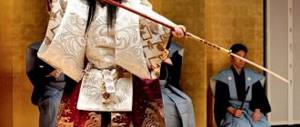My address is not a street
It is not customary here to give proper names to streets. The country is divided into large prefectures, which in turn are divided into districts, which are divided into sections, and then into tiny sections. All of these, with the exception of the first ones, have numbers, including those located inside the sections of the house. But they are not always numbered in order of geographical location.
Building numbers are given according to the order of construction - it’s logical! House No. 1 will be built first, house No. 2 will be built second, etc., and it doesn’t matter how far apart they are. Finding the right address is a nightmare quest not only for visitors, but often for local taxi drivers as well.
When inviting guests, the Japanese don’t just give the address, but send the guest a diagram or a verbal description of it - turn right behind the store, and after two traffic lights turn left into a narrow alley, along which move to a tobacco shop, and behind it you will find the desired house. However, traffic police are always ready to help, showing the desired point on a large, detailed map, which is available at each checkpoint.
How to reach agreement
During the decision-making process, the relevant information is supplied to the appropriate authorities in the appropriate form. Whoever needs to be consulted, whoever needs to be convinced. This is the art of nemawashi . (The exact same term is used in gardening to describe the method of transplanting plants. First, the root is cut, then the cut end is waited for to sprout small roots. And only then the plant is replanted. Ne means “root.” Mawashi literally translates as “tying, fastening.” )
To succeed in Japanese society, you must understand the art of nemawashi and master it well. Before any meeting begins, such a flow of information passes through so many hands that the outcome of the matter is almost a foregone conclusion. From the outside, everything looks elementary simple, but in reality the process can be very complex and time-consuming. First of all, you should know in what places you need to put all these important roots of information. If you choose the wrong place and the wrong people, you will cause irreparable damage to the whole business. Moreover, it is no longer possible to pull out the planted roots. So the most subtle move can turn out to be a grave mistake if you choose the wrong soil.
For nemawashi, the sequence of actions is also of great importance. If you choose the right and “right” people, but in the wrong order, your business is doomed to failure. If you contact the “wrong” people, but contact them in the correct sequence, then you risk getting into a situation where the process can become uncontrollable. Then the original problem that required nemawashi will pale in comparison to the new nightmare.
Architectural and entertainment chaos
Despite the fact that the streets here have no names, they are far from faceless. In large populated areas, each of them looks like a colorful kaleidoscope, because everything here is random and chaotic: the architecture of neighboring buildings, their coloring, size, shape, style. The poles and lanterns are lit with lamps in stunning colors from pink to green, the support underneath can be decorated with garish plastic flower bouquets, and below that there are brightly colored advertisements for everything from cigarettes to dating houses.
There are often proudly pompous inscriptions here that the city is a crime-free zone or recognizes the equality of women, and other things that can cause pride in the country and peace of mind for safety.
Don't say the word "no"
Traditions regarding rules of behavior in Japan are a separate big topic. Every resident of the country honors them with special pride. For example, good form prescribes not to express a negative attitude to your interlocutor towards his words. Therefore, if two Japanese people agree with each other on everything during a conversation, this does not mean at all that they have come to a common opinion. In conversation here they try to avoid the word “no” and not utter it, just like the word “never”. However, if you listen carefully to the answer, the veiled disagreement will still become obvious. And the inhabitants of the country are able to accurately understand this non-verbal response.
Ganguro
If Jersey Shore and Anime had children, they would look exactly like members of the Japanese subculture called Ganguro. Ganguro translates to "black face" and is a trend in which Japanese girls tan to insane levels and then apply a thick layer of makeup. Essentially, this subculture is something of a rebellion against traditional Japanese beauty stereotypes, however, some believe that this subculture is also associated with the kabuki culture. In addition to tanning until brown, girls usually wear black eyeliner and very light eye shadow and lipstick. The hair is usually dyed or bleached. The look is complemented by bright, flashy multi-colored items of clothing.
Take my business card!
Everyone should have a business card and always have it with them. When meeting people, Japanese residents usually do not introduce themselves verbally, but simply hand their interlocutor a card with their name and other necessary data. There are no exceptions to this rule even for the pool. For this case, special business cards with a waterproof coating are produced.
Donut on the head
Body modification is nothing new and it is not limited to Japan. Piercings, hair extensions, enlargement of body parts, tattooing - there are different types of body modifications that people do to themselves all over the world. One of the strangest body modifications associated especially with Japan is the “donut on the head.” This modification involves injecting a saline solution under the skin of a person's forehead, creating a lump that is then formed into a bagel or donut. In fact, this process first appeared in Canada, but since 2007 it has gained incredible popularity in Japan, when it was adopted by the “underground” movement, which began holding parties for people with donuts on their heads. This modification may seem strange, but it is not permanent, as the body will usually absorb the solution by the next morning.
Gender education
Until a certain age, girls cannot communicate with the opposite sex; the ban even applies to conversations and, especially, eating together. If a girl dares not only to have a meal in front of a boy, but also to offer him her food during recess, this will be tantamount to a declaration of love and will not go unnoticed by anyone. Schoolboys and schoolgirls blush in each other's company and try to walk in same-sex groups. The more girlfriends or friends gather, the more decent and better, but solo walks are regarded as immoral and impermissible.
Lifetime Job
Picture taken from the YouTube website
Large holdings and state-owned enterprises sign a lifelong contract with their employees. A person will perform the duties assigned to him as long as his health allows. After college, every Japanese person submits an application for employment and works in the same organization until retirement age. Why is this necessary? Everything is very simple! The employee realizes that his own well-being directly depends on the success of the organization and will work tirelessly.
Sex education
Against the background of the above, anyone will find it strange that there is open access to pornographic products, which in Japan can be bought at any age and anywhere. Even an ordinary grocery store will certainly have a display case with adult magazines, and children can also look at and buy them. In a bookstore this will be at least a floor. Not only paper porn products are legalized in the country. Television broadcasts programs with very explicit content, and traditional anime rarely does without sex scenes.
Culinary delights
The taste preferences of the Japanese differ in many ways from generally accepted rules and traditions, as does their entire amazing life. Take these “oddities” for example:
- The most expensive products in Japan are considered to be fruits and melons. Buying peaches or apricots can cost $5 each, while the famous square watermelons can cost up to $1,000.
- Unlike Asians, hot spices are infrequent guests on Japanese tables. They consider them harmful to the stomach and replace them with their beloved soy sauces, of which there can be several dozen in everyday use.
- Due to the fact that meat was banned in the country for a long time, the methods of preparing it today are very different from classic recipes. Having placed an order in a restaurant, you may be very surprised to see “something” on the plate that only vaguely resembles beef or pork.
The Japanese literally shock tourists with their taste preferences. Well, where else can you find horseradish-flavored chocolate or carbonated tomato juice? And chips with raspberry flavor and Coca-Cola with cucumber flavor are a total brain blast.- Traditional rice vodka sake is not made from alcohol, as many people think, but from wort and malt. The production technology is very similar to beer, which also breaks all the patterns in the field of alcoholic beverages.
- It is not known why, but the Japanese have a tendency to paint products in unnatural colors. The simplest example is sushi. Everyone knows that pink ginger does not exist in nature; it is colored with special food coloring. The same “fate” befalls the caviar of flying fish, which itself is colorless.
Kancho - strange entertainment
This ancient Japanese game also stands in stark contrast to the chaste rules of school. The essence of it is to put your palms together and extend your index fingers forward, suddenly stick them into the anus of an unsuspecting victim who is not expecting such a trick. Despite the fact that “fun” is far from harmless, it is mega-popular, especially in elementary grades.
There were incidents when even teachers were convicted of such actions, and the incident was not always strictly condemned by school management. However, the game can be legally recognized as sexual harassment and is ranked 27th on the international community's list of the most dangerous games.
ENJOYING NATURE
Fans of ecotourism are recommended to go to Hokkaido to Shiretoko National Park, included in the UNESCO Natural Heritage List.
The name Shiretoko means “end of the earth” in the Ainu language of Hokkaido. These places have ancient relict forests that serve as habitat for the brown bear and Ezo deer.
It is also home to many species of rare seabirds and marine mammals.
Labor is a pride, not a burden
The Japanese consider work a matter of honor. Arriving right before the start of the workday is considered unethical and even shameful, as is leaving early, even for a good reason. At least half an hour before the bell, everyone is usually already at work. The Japanese working day always lasts longer than agreed upon when hiring, and this despite the fact that its duration is usually longer than that of Europeans.
The average Japanese person usually spends 15-16 hours at work.
At the same time, the conformity of relationships in the team is so high that an employee who has finished his work may be embarrassed to go home if everyone else is still busy.
Special pillows for men and women
Residents of Europe and North America often associate the Japanese with strange inventions. This product only reinforces this stereotype. For single men who either do not have a lady of their heart, or who has been away for a long time, the Japanese have created a knee pillow called Hizamakura . This "pillow" looks like the lower half of a woman wearing a miniskirt. Ladies don't have to worry either, as the single lady pillow was also invented. The Japanese have come up with a body pillow with a built-in “arm that hugs you.” Known as the hug pillow or boyfriend pillow, this pillow has been around for many years. All you have to do is hug her and she will hug you - perfect for everyone.
Umbrella for rent
On almost any street in relatively large, and often small, cities, you can see a special vase-stand in which there are umbrellas. If the rain takes you by surprise, you can always use them. Umbrella rental is completely free, and the city practically does not incur the cost of purchasing new umbrellas to replace missing ones, because they always return to their place. The local population considers not returning them a shameful theft; they don’t do that here.
Poop Museum
That's right, this museum includes exhibitions dedicated to toilets, waste and everything related to it. If you're lucky enough to visit this Tokyo museum , be prepared to discover new aspects of toilet use and learn a lot about feces. If you love carousels, then this place is definitely for you. Put on your poop hat (seriously, they give you a hat that looks like a pile of poop) and climb down the toilet. From there, you can look at different types of toilets, as well as different types of poop. Don't worry, there is also a rich collection of animal feces, so you won't get bored.
Still haven't gotten into the spirit of all the poop fun? No problem! In this museum you can make your own clay poops and show them to all your friends. If you don't have any, you can show your creation to the museum's mascot, which, you guessed it, is a poop. The exhibition ends with a chorus of toilets. The museum is like a very weird Disney themed ride where you'll see a lot of poop.
Unusual customs of Japanese dining
Japanese eating etiquette prohibits more than it allows. You cannot move dishes from place to place, put a bitten piece on a plate, use a spoon and fork, poke food with a stick or lick it, and much more. A European will also be surprised by the list of things that can be done decently. For example, talking loudly, smacking and slurping while eating food, slurping noodles and other loud sounds and gestures to let others know how tasty and desirable the meal is.
When dining with the Japanese, you should completely erase from your memory the proverb known from childhood about “deaf and dumb”, otherwise your dining companions will decide that you categorically do not like the food.
It is rude to pour alcohol for yourself. Therefore, the Japanese always make sure that the glasses of the neighbor on the right and left are not empty.
Bath traditions
Modern Japanese apartments are mainly equipped with showers. But, if there is a bathroom in the house, it is filled once for all family members. At the same time, they can wash in it either in turn or together, and it is not considered at all reprehensible if a mother goes into the bath with her son, and a father with his daughter.
From an economic point of view, the tradition is justified by the high cost of water, and from a hygiene point of view, by the fact that everyone first washes in the shower, and taking a bath is more for the purpose of relaxation and relaxation than cleansing.
Religion
For modern Japanese, religion is not a matter of faith, but a way of formalizing certain life events: the birth of a child, death, weddings, school exams, seasonal holidays, growing up, aging. For each such occasion, there is the most suitable (or fashionable) religious form, which can be chosen according to taste from a wide range of existing practices. This is the quintessence of religious omnivorousness.
When a child is born, a blessing can be received at the local Shinto shrine. There, the umbilical cord will be wrapped in a high-quality cotton cloth and placed in a small wooden box - like a Shinto relic. But this will not stop the Japanese from having a magnificent Buddhist funeral. No one will feel remorse if the whim came to get married in a picturesque Catholic church. Absolute ignorance of the Bible is by no means an obstacle to going to the All-Night Vigil at Christmas, to a festival where Christmas hymns are sung and toy cherubs decorate a magnificent Christmas tree. Then New Year comes, and everyone eats, drinks and is merry in accordance with the Shinto tradition, which has long since lost its original meaning.
There are a lot of prejudices like: “knock on wood to avoid the evil eye.” You should not sleep with your head facing north, because this is how the dead are laid out before cremation. The entrance to the house must be in the right direction, otherwise failures will haunt you all your life. You should not marry a person of an incompatible blood type or a woman born in the year of the Horse. And in general, for each task you need to choose the right day. Try to get married not when the horoscope advises, and... However, the Japanese treat all this with some carelessness and rather simply pretend to believe. Something like making a double deal to ensure a 100% win. It's better to overdo it than to regret it later.
Adult adoption
Why adopt an adult if he no longer needs care? The Japanese have a unique view on this issue. First of all, it concerns problems of inheritance. For example, a family that has no boys can adopt the daughter's spouse in order to legally give him his own surname and continue the family line. A reverse example: a son-in-law adopts his wife's parents in order to minimize overall taxes and distribute the inheritance more profitably. In any case, in the end everything goes for the benefit of the family.
Liberation wrapper
The Freshness Burger restaurant chain noticed that women rarely bought one of the largest burgers sold at the restaurant. After studying this issue, they found that women were embarrassed to eat such a hamburger, since it went against ochobo - the desired quality of having a small and neat mouth. In short, a large and wide open mouth (which is necessary to eat such a hamburger) was considered unattractive and shameful.
To allow Japanese women to enjoy larger pieces of the popular hamburger, the company came up with the Liberation Wrap. This wrapper covers your face, allowing you to properly bite into your burger while the person sitting across from you sees only the wrapper with a photo of the lower half of a woman's face. It's unclear why there is a photo of a woman's lower face printed on the wrapper, but this Liberation Wrap definitely falls under the category of strange things that can only be seen in Japan.
Subway at rush hour
Tokyo metro by number of people per 1 sq.m. during rush hour it will give Moscow a 100-point head start. At the stations there are special workers whose job task is to cram as many people into the carriage as possible so that the door closes.
To ensure that passengers of different sexes do not experience certain inconveniences, separate carriages are allocated for men and women.
Given relatively short distances, many Japanese prefer to commute by scooter.
CATCHING THE WAVE
You can surf in the coastal waters of several prefectures in the south of the country: Miyazaki, Chiba, Shikoku, Yamanashi (Lake Motosu).
There are also calmer options, for example, SUP surfing, which is easier and more accessible for beginners and unprepared riders. This is worth coming to Okinawa for.
There is a unique opportunity to combine SUP and yoga on Ishigaki, and a relaxing SUP trip is also guaranteed on Miyajima.
Friend or foe
The inhabitants of the country have a highly developed division between friends and foes. The Japanese can ignore people of other nationalities so much that they literally close the door in their face or fail to hear a direct address. The problem with migrants, which is an eternal headache for European countries, was also very cleverly solved here. For this, one piece of legislation was sufficient, according to which the company must pay any foreigner a salary higher than a Japanese person in an identical position. Therefore, valuable specialists from “gaijin” (outsiders) will always find work here, but immigrants without qualifications will never find work.
Other unusual traditions of Japan
- There is no central heating in the country, with the exception of the snowy Hokkaido Prefecture, but the street may be paved with heated asphalt. However, concern for human health in this case is hidden not in temperature comfort, but in minimizing accidents due to possible icing.
- According to tradition, the wife is in complete control of the money in a Japanese family, and the husband does not ask and, especially, does not challenge her financial decisions and purchases. However, this does not lead to financial problems, since it creates financial discipline among local women. They cannot be called by nature either spenders or tight-fisted misers.
- The New Year in the land of the rising sun begins at sunrise. Dawn is its starting point, so in the evening the Japanese do not sit down at the table, like all over the world, but try to go to bed early so as not to oversleep the beginning of the holiday.
- Bowing is the main manifestation of politeness at every convenient and inconvenient occasion. They are used when meeting, saying goodbye, etc. In this case, you should bow exactly as much as the interlocutor, otherwise it will be regarded as a manifestation of bad manners.
- The birth of twins in a family has long been considered a curse, and the twins themselves - the spawn of Satan. In ancient times, they were disposed of along with their mother. Now, of course, they don’t do this, but the stereotypes of thinking remain the same.
- There is no tradition of tipping here.
- Glass is not installed in the entrance windows of houses.
- For a Japanese, falling asleep at work is not an offense that will bring condemnation from superiors, but an indicator of workaholism. If a person falls asleep, it means he worked hard and was very tired. Sleeping during working hours even has its own name - innemuri. And, if it weren’t for the amazing honesty of the Japanese and their extreme responsibility in relation to their job responsibilities, one would suspect that many of them are “overworking” not out of fatigue, but in order to show how hard they work.
- Ice cream toppings in this country can be surprising, to say the least. Among them you can see cacti, horse meat, seafood and even black coal.
- Before entering the toilet room, the Japanese put on special slippers, regardless of whether they walked around the house barefoot or had shoes on. It is believed that thanks to this, toilet germs are not spread throughout the apartment.
- Schoolgirls are prohibited from wearing tights - only high socks, which the girls glue to their legs every day with special glue so that they do not slip down. They always carry a spare tube of glue with them. The length of a school skirt decreases as you get older. There are special school standards for this case.
- Despite the shortage of land, there is a ghost town in Japan, or rather an entire island. It was once densely populated and had everything for complete autonomy for its residents, since coal mining was carried out here. Over time, coal became irrelevant and the island became deserted. Visiting it is currently prohibited.
- In Japan they eat dolphins - a fact that causes not only surprise, but also condemnation among the majority of the inhabitants of our planet.
Unsleeping Eye
Living in Japan means being under constant pressure of communication and care. Get ready to have a watchful eye constantly watching you. Someone, everywhere, every minute. It's unavoidable.
If you forget to turn off your headlights during the daytime, oncoming cars will flash non-stop to remind you of this. So that you do not get confused at the station while waiting for the train, you will be taken under the wing of an incessant mechanical voice. It will announce exactly where your express is now, how many seconds are left before its arrival, and how full it is. The voice will not fail to remind you to move away from the edge of the platform in order to avoid an accident, and will advise you to hurry up so as not to miss the boarding, or to wait for the next train. It will also tell you whether you can land without looking up from the newspaper - just remember to roll it into a narrow tube, otherwise you will disturb other passengers.
The omnipresent voice will not leave you even on the train: “Please go to the middle of the carriage so as not to interfere with the entry and exit of passengers... Next stop... When leaving the carriage, do not forget your things!” You'd think there would be a place on a crowded Japanese train where there would be a chance to forget them!
Due to increased care from others, the Japanese lose the ability to take care of themselves until life forces them to do so. In foreign restaurants, they are invariably puzzled by the question of what aperitif they prefer. How would they know this if they were not offered a choice? Every item, every product you buy in Japan, including toilet paper, comes with instructions on how to open the package and what to do after that. Home appliances are always sold complete with thick manuals, which provide for every possibility of human error: “If the light bulb doesn’t light up, check to see if you accidentally forgot to plug the plug into the socket.” Drawings depict each step, pressing buttons, opening lids and congratulating you with a smile on the successful completion of the process. At receptions, even before the bottles of champagne are uncorked, the master of ceremonies will certainly read out instructions on how to have fun and how to leave the reception without forgetting your coat.
Among the Japanese you will never be left to your own devices.











